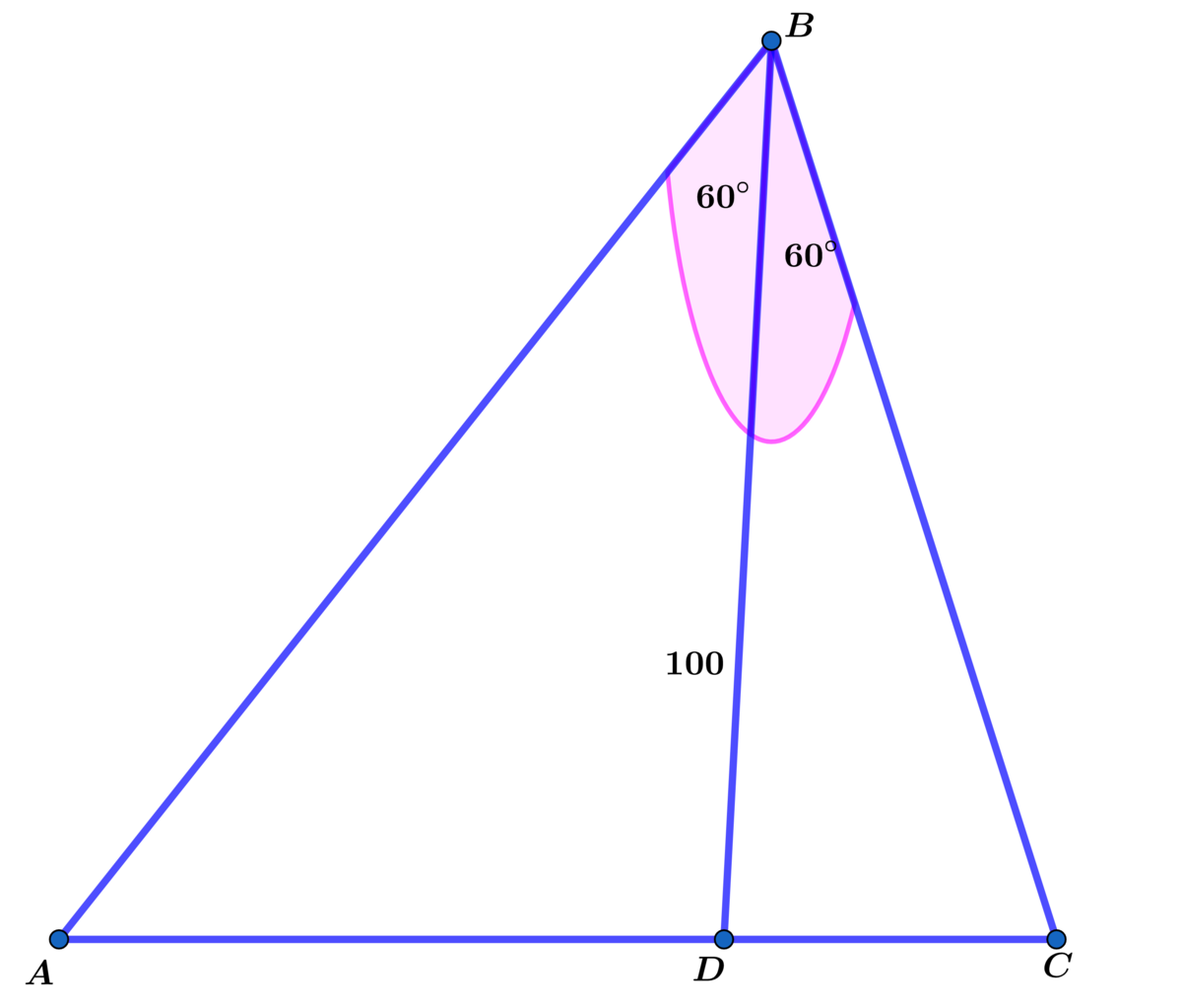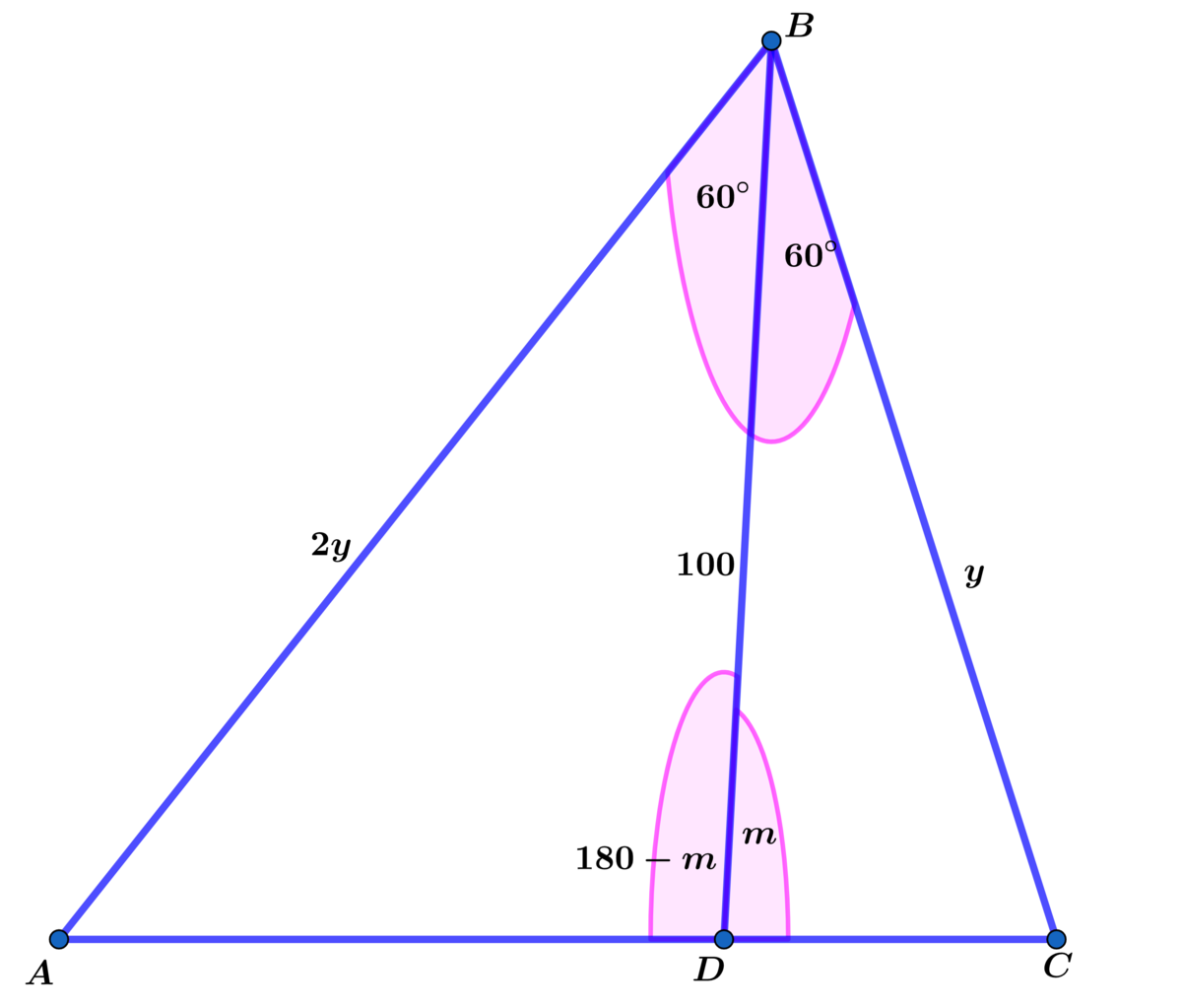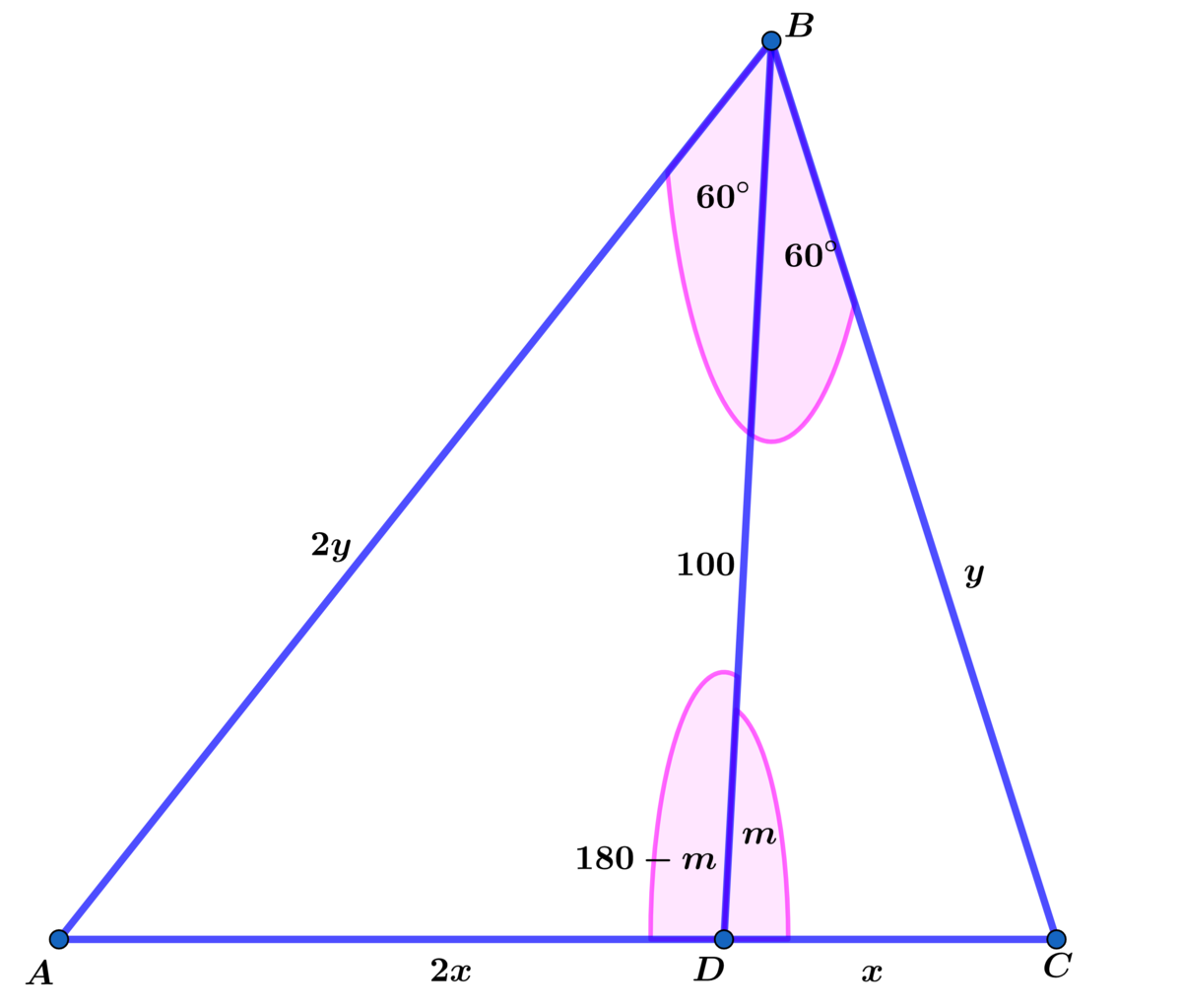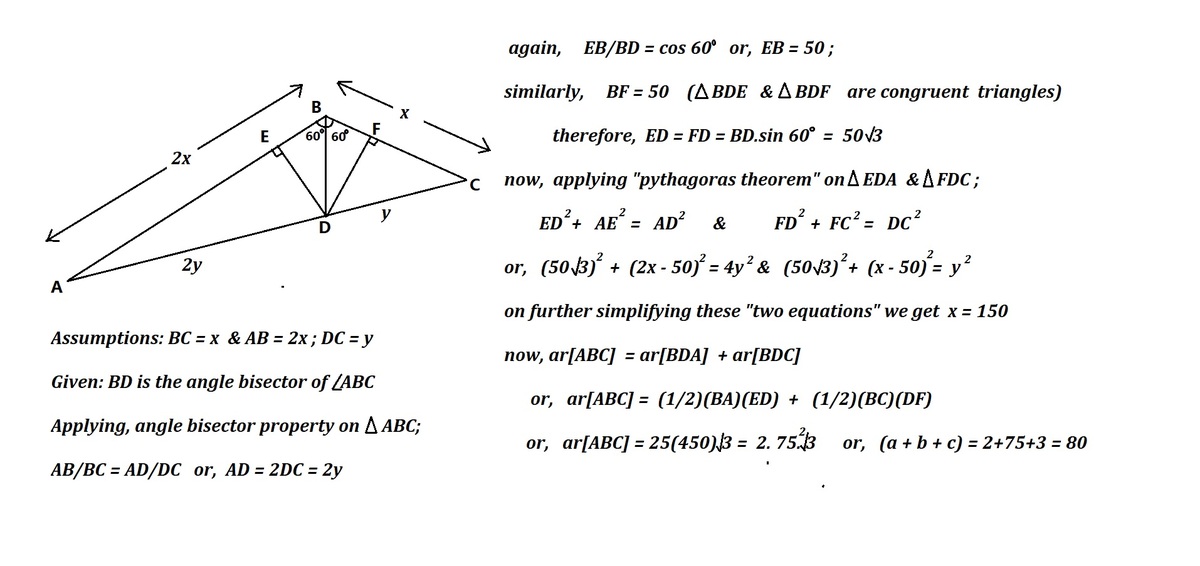Area Of A Triangle

In the diagram above A B = 2 B C , ∠ A B D ≅ ∠ D B C = 6 0 ∘ and B D = 1 0 0 .
If the area of △ A B C can be expressed as A △ A B C = a b a c , where a , b , and c are coprime positive integers, find a + b + c .
The answer is 80.
This section requires Javascript.
You are seeing this because something didn't load right. We suggest you, (a) try
refreshing the page, (b) enabling javascript if it is disabled on your browser and,
finally, (c)
loading the
non-javascript version of this page
. We're sorry about the hassle.
3 solutions

Using the Law of sines for △ A B D we have:
3 2 A D = sin ( 1 8 0 ∘ − m ) 2 y = sin ( m ) 2 y ⟹ A D = sin ( m ) 3 y
and using the Law of sines for △ D B C we have:
3 2 D C = sin ( m ) y ⟹ D C = 2 sin ( m ) 3 y
⟹ D C A D = 2 .
Let D C = x ⟹ A D = 2 x .

Using the law of cosines for △ A B D we have:
4 x 2 = 4 y 2 + 1 0 0 2 − 4 0 0 y cos ( 6 0 ∘ = 4 y 2 − 2 0 0 y + 1 0 0 2
⟹ x 2 = y 2 − 5 0 y + 2 5 2 ∗ 4
and using the law of cosines for △ D B C we have:
x 2 = y 2 + 1 0 0 2 − 2 0 0 y cos ( 6 0 ∘ ) = y 2 − 1 0 0 y + 2 5 2 ∗ 4 2
⟹ y 2 − 5 0 y + 2 5 2 ∗ 4 = y 2 − 1 0 0 y + 2 5 2 ∗ 4 2 ⟹ 5 0 y − 4 ∗ 2 5 2 ∗ 3 = 0 ⟹
y = 5 0 ( 2 ) ( 5 0 ) ( 2 5 ) ( 3 ) = 1 5 0
⟹ x 2 = 1 5 0 2 − 5 0 ( 1 5 0 ) + 2 5 2 ∗ 4 = 2 5 2 ∗ 6 2 − 2 5 2 ∗ 1 2 + 2 5 2 ∗ 4 = 2 5 2 ( 2 8 ) =
2 5 2 ∗ 2 2 ∗ 7 ⟹ x = 5 0 7 ⟹ A C = 3 x = 1 5 0 7
and A D = 2 x = 1 0 0 7 = sin ( m ) 3 y = sin ( m ) 1 5 0 3 ⟹
sin ( m ) = 2 3 7 3 and A D = 1 0 0 ⟹ height h of △ A B C is h = 1 0 0 ( 2 3 ) 7 3
= 1 5 0 7 3
⟹ A △ A B C = 2 1 ( 1 5 0 7 ) ( 1 5 0 7 3 ) = 2 ∗ 2 5 2 ∗ 3 2 3 =
2 ( 7 5 ) 2 3 = a ∗ b a ∗ c ⟹ a + b + c = 8 0 .
Let B C = x ; then A B = 2 x . Let ∠ B A C = θ . By sine rule ,
⎩ ⎪ ⎨ ⎪ ⎧ B D A B = sin ∠ B A D sin ∠ A D B B D B C = sin ∠ B C D sin ∠ B D C ⟹ 1 0 0 2 x = sin θ sin ( 1 2 0 ∘ − θ ) ⟹ 1 0 0 x = sin ( 6 0 ∘ − θ ) sin ( 6 0 ∘ + θ ) . . . ( 1 ) . . . ( 2 )
( 2 ) ( 1 ) : 2 = sin θ sin ( 1 2 0 ∘ − θ ) × sin ( 6 0 ∘ + θ ) sin ( 6 0 ∘ − θ ) = sin θ sin ( 6 0 ∘ + θ ) × sin ( 6 0 ∘ + θ ) sin ( 6 0 ∘ − θ ) = sin θ sin ( 6 0 ∘ − θ ) = 2 3 cot θ − 2 1 Note that sin ( 1 8 0 ∘ − ϕ ) = sin ϕ
⟹ tan θ = 5 3 ⟹ sin θ = 1 4 2 1 , cos θ = 1 4 5 7 and from ( 1 ) :
1 0 0 2 x ⟹ x A △ A B C = sin θ sin ( 6 0 ∘ + θ ) = 1 4 2 1 2 3 × 1 4 5 7 + 2 1 × 1 4 2 1 = 3 = 1 5 0 = 2 1 A B × B D sin 6 0 ∘ + 2 1 B C × B D sin 6 0 ∘ = 2 1 ( 3 0 0 + 1 5 0 ) ( 1 0 0 ) ( 2 3 ) = 2 ( 7 5 2 ) 3
Therefore a + b + c = 2 + 7 5 + 3 = 8 0 .
